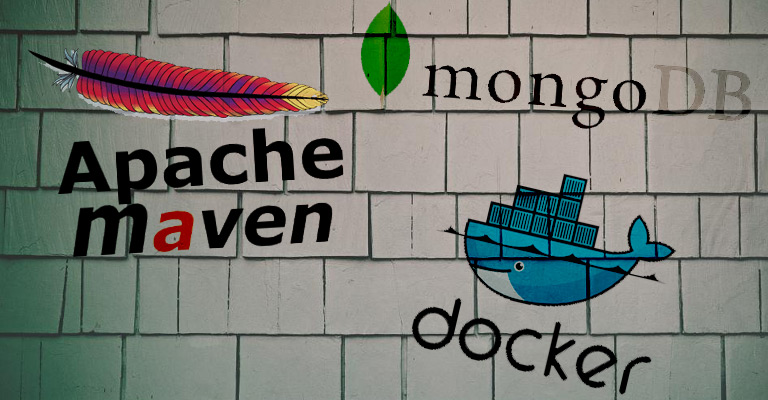Maven and MongoDB: a short introduction
Hello! This post provides a short introduction in Maven and MongoDB and is for those who are unfamiliar with these tools. We will use both tools for our new sample project to show how to work with persistent data in Docker.
##Maven
Apache Maven can be understood as a project management tool with best practices for your projects, so that several projects work in the same way and share the same characteristics. Therefore it applies patterns to the project’s build infrastructure like e.g. visibility, reusability, maintainability and comprehensibility. These patterns can be used for managing Builds, Documentation, Reporting, Releases and for many more tasks. Maven’s standard conventions help to accelerate the project’s development process. The most important file of a Maven project is pom.xml (pom stands for Project Object Model) which contains all relevant information of your project. A good starting guide for Maven can be found here.
Your Dockerfile should be located in the POM-file’s directory (root of your project). Use the Maven image:
FROM maven:3.2-jdk-7-onbuild
CMD ["do something"]
The build will copy . /usr/src/app and RUN mvn install so you can build and run the image with:
docker build -t maven .
docker run -it --name maven-script maven
If a complete Dockerfile is inconvenient for your project you can run the Maven Docker image directly:
docker run -it --rm --name maven-project -v "$PWD":/usr/src/maven-project -w /usr/src/maven-project maven:3.2-jdk-7 mvn clean install
For our purpose it is not necessary to create a Maven Container, so we will just start the job via Jenkins and use its Maven Plugin to build the application through the pom-file.
###Installation
Download bin.zip and follow the instructions to install Maven. Verify your installation with mvn --version. If you get an error check whether you set your JAVA_HOME variable correctly or wheter your settings.xml consists of the right configuration for you.
In the next step you could try to build your first sample project with the help of the Archetype Plugin and its command archetype:generate or try to compile our sample project from GitHub with using mvn compile in the same directory as the project.
##MongoDB
MongoDB is a document database in which each record is a document that is similar to a JSON object which consists of field and value pairs. As you can see the values can include other array, documents or even arrays of documents.
{
name: "Docker",
projects: ["Django", "MongoDB"],
comments: [
{
message: 'First comment',
dateCreated: new Date(2015,5,25)
},
{
message: 'Second comment',
dateCreated: new Date(2015,5,25)
}
]
}
Furthermore MongoDB provides high performance, e.g. with faster queries through indexes. Its replication facility provides automatic failovers and data redundancy and the horizontal scalability allows automatic sharding across a cluster of machines.
Based on the latest version of Ubuntu from the Docker Hub Repository you can import the MongoDB public GPG key, create a MongoDB repository file, whereupon you can update your packages and install MongoDB:
# Format: FROM repository[:version]
FROM ubuntu:latest
# Installation: Import MongoDB public GPG key AND create a MongoDB list file
RUN apt-key adv --keyserver hkp://p80.pool.sks-keyservers.net:80 --recv 7F0CEB10
RUN echo 'deb http://downloads-distro.mongodb.org/repo/ubuntu-upstart dist 10gen' | tee /etc/apt/sources.list.d/10gen.list
# Update apt-get sources AND install MongoDB
RUN apt-get update && apt-get install -y mongodb-org
Because MongoDB requires a data directory you need to create that with:
# Create the MongoDB data directory
RUN mkdir -p /data/db To run `mongod` inside the containers launched from the MongoDB image you need to set an `ENTRYPOINT` and ports:
# Expose port 27017 from the container to the host
EXPOSE 27017
# Set usr/bin/mongod as the dockerized entry-point application
ENTRYPOINT usr/bin/mongod
Now you can save the file and build your image.
##Installation
To install MongoDB follow these instructions and mind the necessary dependencies.

